
About UsThe Numismatic Bibliomania Society is a non-profit organization promoting numismatic literature. For more information please see our web site at coinbooks.org SubscriptionsThose wishing to become new E-Sylum subscribers (or wishing to Unsubscribe) can go to the following web page link MembershipThere is a membership application available on the web site Membership Application To join, print the application and return it with your check to the address printed on the application. Membership is only $15 to addresses in the U.S., $20 for First Class mail, and $25 elsewhere. For those without web access, write to: David M. Sundman, Secretary/TreasurerNumismatic Bibliomania
Society AsylumFor Asylum mailing address changes and other membership questions, contact David at this email address: dsundman@LittletonCoin.com SubmissionsTo submit items for publication in The E-Sylum, just Reply to this message, or write to the Editor at this address: whomren@coinlibrary.com
BUY THE BOOK BEFORE THE COINYou won't regret it! |
- WAYNE'S WORDS: THE E-SYLUM JULY 19, 2009
- BOWERS TO SPEAK AT 2009 NBS NUMISMATIC LITERATURE SYMPOSIUM
- NEW E-BOOK: STANDARD CATALOG OF WORLD COINS 1701-1800
- NEW BOOK: COLLECTING & INVESTING STRATEGIES FOR BARBER DIMES
- SEARCHING FOR NUMISMATIC LITERATURE FIXED PRICE TREASURES
- COMPAGNIE GENERALE DE BOURSE NUMISMATIC LITERATURE SALES
- QUERY: ADAMS U.S. AUCTION CATALOGS REPRINT
- MORE ON THE 100 GREATEST ITEMS OF AMERICAN NUMISMATIC LITERATURE
- TRACKING SETS OF COIN WORLD
- 1972 NUMISMATIC AUCTION CATALOG MICROFILM PROJECT
- COINARCHIVES.COM LIMITS ACCESS AND IMPLEMENTS FEE
- ANS AUGUSTUS SAINT-GAUDENS PROGRAM OCTOBER 10TH, 2009
- THE AMERICAN MEDAL SCALE
- MORE ON THE CALIFORNIA PAYMENT WARRANTS
- QUIZ ANSWER: WHO STARRED THE S-48 IN A FILM?
- MORE ON EARTHQUAKE MEDALS
- ANOTHER ROYAL MINT MULE: THE 1994 TWO POUND GOLD PIECE
- WILLIAM B. CHRISTENSEN
- THE U.S. MINT'S "HISTORIAN'S CORNER
- WILLIAM DU BOIS' HISTORY OF THE PATTERSON FAMILY
- ARTICLE: WAS ROYAL CANADIAN MINT GOLD SMUGGLED OUT IN ACID?
- THE BRASHER BULLETIN SUMMER 2009 ISSUE
- LOST GOLD AND SILVER INGOTS RECOVERED AT SEA NEAR PATAGONIA
- WAYNE'S NUMISMATIC DIARY JULY 14, 2009
- ANCIENT COINS AND DEEP PROTON ACTIVATION ANALYSIS
- NEW ALTERNATIVE CURRENCY: THE STROUD POUND
- SILVER DOLLAR SMITH'S SALOON
- FEATURED WEB PAGE: CALCUTTA MINT
WAYNE'S WORDS: THE E-SYLUM JULY 19, 2009
 Among our recent subscribers are Scott Schechter, Brent Zimmerman, Michel Prieur, Marie Dykstra, John Salyer and Patricio Davidoff. Welcome aboard, everyone! We now have 1,240 subscribers.
Among our recent subscribers are Scott Schechter, Brent Zimmerman, Michel Prieur, Marie Dykstra, John Salyer and Patricio Davidoff. Welcome aboard, everyone! We now have 1,240 subscribers. On the eve of the 40th anniversary of the Apollo 11 moon landing I can't help but recall the magical night that I viewed through the eyes of a 10 year old. My parents dragged me out of bed to watch television, something that had never happened before (nor since). I'm glad they did - it was dramatic history in the making, and for a change it didn't involve war, riots or assassination. It was beautiful, grainy moving images aside.
Today's Washington Post carried a great editorial about the space program, but it wasn't so uplifting.
Only in human spaceflight do we celebrate the anniversary of an achievement that seems more difficult to repeat than to accomplish the first time. Only in human spaceflight can we find in museums things that most of us in the space business wish we still had today.
The United States spent eight years and $21 billion -- around $150 billion today -- to develop a transportation system to take people to the moon. We then spent less than four years and $4 billion using it, after which we threw it away. Not mothballed, or assigned to caretaker status for possible later use. Destroyed. Just as the Chinese, having explored the world in the early 15th century and found nothing better than what they had at home, burned their fleet of ships.
Today my son Christopher is ten years old. Where are the moon colonies we surely thought we'd be visiting regularly by now? Oh, well. Back to numismatics.
This week we open with information on NBS activities at the upcoming ANA convention, a new e-book Standard Catalog of World Coins from Krause Publications, and a new book on Barber Dimes from Zyrus Press.
Next, we have items on George Kolbe's latest price list, a Paris coin firm's numismatic literature web site, and John Adams' 19th century auction catalog book.
Other topics include sets of Coin World back issues, Coin World and numismatic auction catalogs on microfilm, the CoinArchives.com web site, an ANS program on artist Augustus Saint-Gaudens, and coin dealer William D. Christensen.
Topics continued from previous issues include the American Medal size scale, the California Treasurer's Warrants, earthquake medals, and the S.S. Brother Jonathan ingots. To learn about the Stroud Pound and Silver Dollar Smith's Saloon, read on. Have a great week, everyone!
Wayne Homren
Numismatic Bibliomania Society
BOWERS TO SPEAK AT 2009 NBS NUMISMATIC LITERATURE SYMPOSIUM
Numismatic Bibliomania Society President John Adams reports:
He will be telling us how he researched the book and brought it to such a successful fruition. The field of colonials has been so heavily researched that adding value to the subject was a special challenge. Dave will be assisted by Dennis Tucker of Whitman.
Other NBS events at the upcoming American Numismatic Association convention are listed on our web site at www.coinbooks.org/events/
NBS Club Table
Aug 5-Aug 9
American Numismatic Association World's Fair of Money
Los Angeles, CA
Manned by Howard A. Daniel III
NBS Board Meeting
Thursday, August 6, 2009
NBS Board Meeting (open to the public)
American Numismatic Association World's Fair of Money
1:00 pm in Room 511A of the
Los Angeles Convention Center, Los Angeles, CA
NBS Numismatic Literature Symposium
Thursday, August 6, 2009
NBS Numismatic Literature Symposium
American Numismatic Association World's Fair of Money
11:30 pm on 8/6 in room 511A of the
Los Angeles Convention Center, Los Angeles, CA.
NBS General Membership Meeting
Friday, August 7, 2009
NBS General Membership Meeting
American Numismatic Association World's Fair of Money
11:30 am on 8/7 in Room 510 of the
Los Angeles Convention Center, Los Angeles, CA
NEW E-BOOK: STANDARD CATALOG OF WORLD COINS 1701-1800
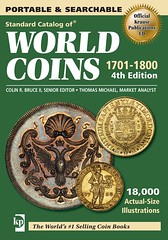 The Standard Catalog of World Coins 1701-1800 from Krause Publications is now available on CD.
The Standard Catalog of World Coins 1701-1800 from Krause Publications is now available on CD.The entire contents of the 18th century book's Fourth Edition is available for sale at ShopNumisMaster.com. Compatible with PCs or Macs, the CD:
- Contains more than 1 million price listings
- Features 18,000 actual-size illustrations and 50,000 coin images
- Allows users to enlarge images up to 400 percent
- Contains exchange tables
- Is completely searchable by keyword or index
With the release of the 18th century CD, KP now offers all five of its Standard Catalog of World Coins catalogs on CD. For more information, visit www.shopnumismaster.com/product/standard-catalog-of-
world-coins-1701-1800-cd/world-coins
NEW BOOK: COLLECTING & INVESTING STRATEGIES FOR BARBER DIMES
 Title: Collecting & Investing Strategies for Barber Dimes
Title: Collecting & Investing Strategies for Barber Dimes Author: Ambio, Jeff
Suggested Retail Price: $29.95
Size: 6" x 9"
Depth: 1"
Binding: Paperback
Pages: 432
Images: 100+
Predicted Pub Date: 08/01/2009
Barber Dimes. With an image of Liberty emblazoned on the obverse, this 19th and early 20th century "work-horse" series represents a pinnacle of classical American coinage. Minted from 1892 to 1916, the Barber Dime saw extensive circulation and regular use in commercial channels during an era of rapid economic expansion.
Collecting and Investing Strategies for Barber Dimes is devoted to a detailed analysis of every proof and business strike issue in the Barber Dime series. Jeff Ambio, a preeminent numismatic researcher and prolific cataloguer for Americaís top auction companies, offers insights on several methods through which to build a collection, key factors governing the market in which these coins trade, and invaluable strategies for collecting and investing in Barber Dimes. Included within this guide is current information on pricing, auction records, strike, luster, population and rarity rankings.
Ambioís personal insights, keen observations, and important contribution to the body of information available on this series not only offers collectors a unique opportunity to learn more about Barber Dimes, but will serve for generations to come as the standard reference on the series.
Jessica adds:
SEARCHING FOR NUMISMATIC LITERATURE FIXED PRICE TREASURES
Dennis Tucker writes:From George Frederick Kolbe's list no. 49:
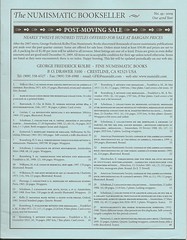 What follows is a list of 1,179 numismatic books, catalogs, monographs, etc., starting with Pellicer i Bru and ending with Schweikart --- with everything from A to Z in between, in no particular order!
What follows is a list of 1,179 numismatic books, catalogs, monographs, etc., starting with Pellicer i Bru and ending with Schweikart --- with everything from A to Z in between, in no particular order!Or seemingly no particular order.... I've only spent a few minutes scouring the list's excessively abundant riches, and I do see the occasional pattern emerging... a short run of publications relating to Chinese coins here, another short run of German books there.... but even those "patterns" seem random, with no internal logic (alphabetical or thematic). They truly appear random, as the catalog copy notes ("listed as they were encountered").
This makes for a fun, treasure-hunting feeling, like exploring an old book shop in disarray. But it's also a bit frustrating, not being able to scan by author name or by theme.
I think he's forcing us to read the entire catalog. Cleverness, thy name is Kolbe!
To read the original Collector's Universe article, see: Is GFK's list no. 49 frustrating, fun, or both? (http://forums.collectors.com/messageview.cfm?
catid=26&threadid=729228)
THE BOOK BAZARRE
COMPAGNIE GENERALE DE BOURSE NUMISMATIC LITERATURE SALES

Their website is bilingual in French and English; their monthly electronic magazine the Bulletin Numismatique is only in French but easy to understand. They also have a passion for numismatic literature (and are publishers themselves), and have extensive offerings on their website - both new and antiquarian.
I wrote to Michel Prieur, who provided the following background on their offerings. -Editor
Michel Prieur writes:
What is missing in our working library goes there, what is a duplicate or not a working book goes to our e-bookshop. This explains the variety of titles, languages, periods, topics - it reflects the various interests of tens of collectors who sold us their libraries. We very seldom auction books and we advise sellers to consign to the e-shop.
We also publish books, some for the general public such as the standard reference for modern French coins and the standard reference for Euro coins and banknotes. We also publish some highly specialised works, for instance a catalog of Merovingian rings. We also have a program of fundamental French numismatic reference book reprints. In addition we issue a monthly Bulletin, a free .pdf in which we of course present the most important new books we have included during the month in the e-book-shop.
We feel the most important for a coin and banknote dealer is to spread numismatic information to the public; if the public doesn't know about numismatics, the public will never collect coins or banknotes, and professional numismatists will starve, at best.
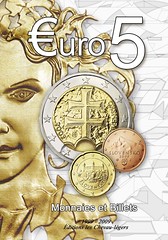
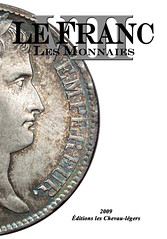
To visit the firm's book shop, see: http://www.numishop.com/boutique1.php?
boutique=lib&zd=MTAtMDctMjAwOQ%3D%3D
QUERY: ADAMS U.S. AUCTION CATALOGS REPRINT
Regarding John Adams' United States Numismatic Literature Volume I, Nineteenth Century Auction Catalogs, Robert Rightmire writes: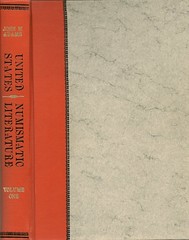
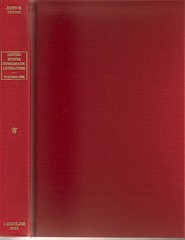
MORE ON THE 100 GREATEST ITEMS OF AMERICAN NUMISMATIC LITERATURE
Regarding Charlie Davis' comments on the "100 Greatest" survey, NBS webmaster Bruce Perdue writes:To read the earlier E-Sylum article, see: MORE ON THE 100 GREATEST ITEMS OF AMERICAN NUMISMATIC LITERATURE (http://www.coinbooks.org/esylum_v12n28a08.html)
TRACKING SETS OF COIN WORLD
Responding to Charlie Davis' commentary about Coin World in his '100 Greatest' submission in last week's E-sylum, I wrote:An E-Sylum reader writes:
Fred Schwan writes
George Fuld writes:
1972 NUMISMATIC AUCTION CATALOG MICROFILM PROJECT
"We eventually hope to make this financially possible, but there are not sufficient funds at the moment," Dr. Munby concluded.
First catalogs to be microfilmed are dated between 1901 and 1945, numbering about 5,000 catalogs. Catalogs are microfilmed at a reduction of 20 on 16 millimeter film.
Before the microfilm project, the best available set of Sotheby catalogs was reportedly in the British Museum, though it is not entirely complete.
COINARCHIVES.COM LIMITS ACCESS AND IMPLEMENTS FEE

Coin find inventories and museum collections are increasingly being made freely available through online databases. It is also a growing trend that academic journals are being made available electronically while subscription prices are being lowered for those who opt for online subscription only. Therefore, it is curious these days when a resource suddenly ceases to be free and implements an inordinate access fee.
As I came into the office yesterday, the first thing I heard from a colleague was that CoinArchives.com had ceased allowing free and complete access to its archived auction sales and had limited full access only to those who pay an annual subscription of $600 or Ä430.
CoinArchives.com was a convenient reference used by some academics and researchers who wanted to start conducting a die study or who needed to make quick identification. It was also an easy place to go when one needed to see an image when certain reference catalogues were not at immediately at hand. Collectors frequently used the site to conduct their own research or to investigate pricing trends before making an acquisition. The recent and seemingly abrupt decision to limit access has certainly stirred up spirited discussions on collector fora such the Moneta-L list (click the link and see the subsequent discussion threads).
There has been a lot of speculation as to why this decision was made to limit access only to those who can pay such a large fee. But perhaps it is telling that instead of a $20 yearly access fee for which many people would pay, a $600 annual fee was chosen that will exclude most collectors, researchers, and institutions, and will therefore be a resource which only a few large auction houses and profitable dealers can afford. The fee will limit the potential of amateur and academic study alike with this resource and will be an especially serious blow to collectors who like to do a bit market research before bidding or buying.
Perhaps researchers will return to using large photo files like those at the American Numismatic Society or at Frankfurt University, but many photo files have ceased to be updated since the mid- to late 1990s precisely because of sites like CoinArchives.com that were electronically archiving sales and making those archives free to the public.
To read the complete article, see: CoinArchives.com Limits Access and Implements Fee (http://coinarchaeology.blogspot.com/2009/07/coinarchivescom-limits-access-and.html)
CoinArchives Pro helps you:
- Gather recent and historical market information
- Research the rarity of coins on the auction market
- Make better buying and selling decisions
- Identify and attribute coins
- Trace pedigrees
What's Different?
CoinArchives Pro builds on the success of our free service, CoinArchives.com, to bring you:
- Full access to a searchable and browsable archive of more than 900,000 auction records
- Enhanced search tools
- Multiple auction lot viewing and sorting options
- Analysis and side-by-side coin comparison features
All of these features make CoinArchives Pro the most powerful tool on the Web for numismatic professionals.
To visit Coin Archives, see: http://www.coinarchives.com/
ANS AUGUSTUS SAINT-GAUDENS PROGRAM OCTOBER 10TH, 2009
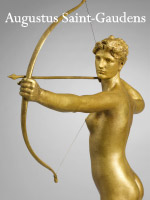 On Saturday, October 10th, 2009, the ANS will be offering a program on Augustus Saint-Gaudens and his numismatic legacy. The event will feature lectures by Saint-Gaudens experts, study sessions of ANS and loan items by Saint-Gaudens, and a guided tour of the Saint-Gaudens exhibition at the Metropolitan Museum of Art. Program information will soon be posted on the ANS website.
On Saturday, October 10th, 2009, the ANS will be offering a program on Augustus Saint-Gaudens and his numismatic legacy. The event will feature lectures by Saint-Gaudens experts, study sessions of ANS and loan items by Saint-Gaudens, and a guided tour of the Saint-Gaudens exhibition at the Metropolitan Museum of Art. Program information will soon be posted on the ANS website.This will be the first of a series of weekend seminars on aspects of the ANS collection, at which scholars and collectors will work in small sessions through parts of the ANS collection.
For Saint-Gaudens enthusiasts, please also note that October 8th & 9th, the Metropolitan Museum of Art will be holding a symposium and various tours in conjunction with their exhibit Augustus Saint-Gaudens in The Metropolitan Museum of Art. For more information on this exhibit, Click here
THE AMERICAN MEDAL SCALE
Pete Smith writes:
Ken Barr also had the answer and was the first to note the So-Called Dollars as a reference.
David Gladfelter writes:
There was no consistency in use of the "American scale" in this country. Lowís catalog of Hard Times tokens published in 1899 gave sizes in millimeters. Bettsís catalog of American colonial medals published in 1894 used the American scale but did not specify it. In the text descriptions of size, Baker, Betts and Low gave numbers only, without reference to scale Ė American or metric.
The American scale is rarely used anymore. It was used by Hibler and Kappen in their book on so-called dollars published in 1963.
Harry Waterson writes
In their introduction, they note: Sizes are shown throughout in sixteenths of an inch, next upper size being used if a particular piece is of interim size. Earlier in the introduction, it is noted that one of the criteria for a So-Called Dollar is that it should fall between size 21 and size 28 with exceptions noted.
So a very simple mathematical formula will convert any size to mm. Just take any size divide it by 16 and times the answer by 25.4mil.per inch and Bob's your uncle, i.e., 22/16 = 1.375 x 25.4 = 34.92mm.
This system is pretty inaccurate in the So-Called Dollar size range as the practice of rounding up to the next sixteenth of an inch can introduce an error ranging from 4.7% to 3.5% (As the size increases the possible error decreases). It is easy to see why this yardstick is rarely used. In fact, the yardstick versus meter issue caused NASA to miss Mars not too long ago. All the best, and thanks for the fine work you do turning out the E-sylum. I look forward to it every week.
Ron Benice writes:
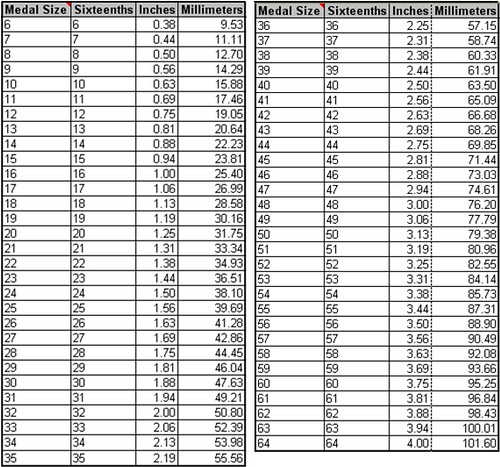
MORE ON THE CALIFORNIA PAYMENT WARRANTS
Tom DeLorey adds:David Klinger of San Diego, CA writes:
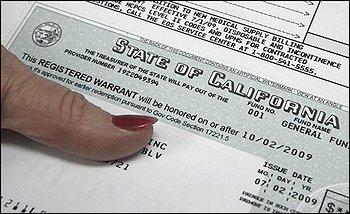
To read the previous E-Sylum article, see: BANKRUPT CALIFORNIA ISSUES PAYMENT WARRANTS (http://www.coinbooks.org/esylum_v12n28a17.html)
QUIZ ANSWER: WHO STARRED THE S-48 IN A FILM?
Last week Pete Smith, author of The Story of the Starred Reverse Cent, a monograph about the rare Sheldon S-48 large cent variety wrote:Mark Borckardt writes:
Great info, but Tricky Pete was fooling with us. He writes:
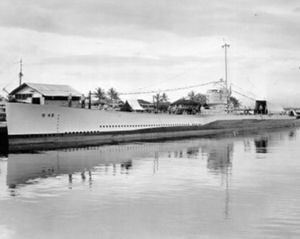
The S-48 was constructed between 1920 and 1921. On a trial run prior to commissioning, she sank in 60 feet of water. She was raised, repaired and commissioned on October 14, 1922. In January 1924, she was grounded in a storm near Little Harbor, New Hampshire. Damage was extensive and repairs would be costly. She was decommissioned July 7, 1925.
The S-48 was repaired, rebuilt and served a second term from 1929 to 1935. After another period of activity, she was recommissioned for service during World War II 1940 to 1945. In 1946 she was sold and scrapped.
Robert I. Nesmith filmed trials of the S-48 for Fox Newsreel in 1922. He was a numismatist and authority on treasure hunting. I found the reference to S-48 in his obituary from 1972.
I had a couple of other related experiences in the week after I read about Nesmith. I acquired a medal from my home town with partial legend "AVA" I knew this had nothing to do with bus tokens. With a little research I discovered that AVA stood for American Volkssport Association. Later I examined a medal with an open book and lamp of knowledge. This did not represent the American Numismatic Association but was issued by the American Legion.
We become comfortable with certain things in numismatics, like S-48 representing the starred reverse cent. We need to keep an open mind that sometimes these familiar symbols may represent something totally different.
MORE ON EARTHQUAKE MEDALS
Leon Saryan writes:How do I know this? Well, I checked the U.S. Geological Survey's web site: Latest Earthquakes in the World - Past 7 days (http://earthquake.usgs.gov/eqcenter/recenteqsww/Quakes/quakes_all.html)
-Editor
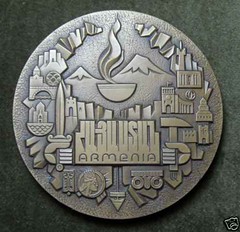
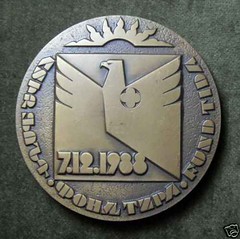
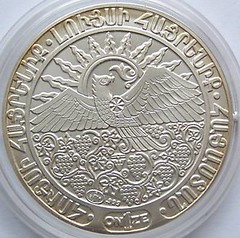
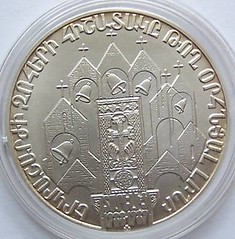
To read the previous E-Sylum article, see: MORE ON EARTHQUAKE TOKENS AND MEDALS (http://www.coinbooks.org/esylum_v12n28a14.html)
ANOTHER ROYAL MINT MULE: THE 1994 TWO POUND GOLD PIECE
Regarding the new "dateless" 20 pence coins mistakenly released by the Royal Mint, Peter Gaspar writes:The normal base metal currency piece had its own obverse. For about half of the thousand or so gold proofs struck, an obverse die was mistakenly employed that was meant for a gold double sovereign with a St. George and the Dragon reverse. The standard catalog published by Spink includes this mule.
At the time of issue, the Mint sent a letter to purchasers of the gold proof version of the Bank of England two pound piece apologizing for the mistake and offering to replace the mule (not called that in the letter) with a piece with the intended obverse. I have not been able to learn how many purchasers of the mule accepted the Mint's offer to replace it.
Regarding the dateless 20 pence coin, Philip Mernick adds:
I couldn't remember when I first heard about it, but this Daily Telegraph article contains a Royal Mint statement that the error occurred in 2008 If the fellow in the pub was offered £500 he should have taken it, when the hysteria dies down I reckon they will be worth about $20.
To read the Telegraph article, see: Customer handed 20p worth £7,000 in change for pint (http://www.telegraph.co.uk/foodanddrink/pubs
/5736314/Customer-handed-20p-worth-7000-in-change-for-pint.html)
Dick Johnson adds:
A LUCKY Bridgwater grandmother bagged a precious penny Ė and is now looking to make her fortune.
Tania Simmonite, from Bell Close, found an unusual one-pence piece in the till at her Say Cheese work place in the townís Cornhill market a few years ago.
Now, after reading about the keenly sought after dateless 20p pieces in her Mercury, Tania may sell her colourless 2003 coin to the highest bidder.
She told the Mercury: "I was really surprised when I found the penny in the till in work a few years ago.
"I phoned the Royal Mint who said they would look at it Ė and they confirmed it was genuine, sending me a letter telling me how it came about.
"But I havenít a clue what itís worth."
The Royal Mint explained the coinís appearance resulted from a minting error when it slipped past the copper-plating process.
It then somehow eluded the Royal Mintís inspection procedure and found its way into circulation.
To read the complete article, see: Bridgwater woman nets rare penny (www.bridgwatermercury.co.uk/news/4500083.
Bridgwater_woman_nets_rare_penny/)
THE BOOK BAZARRE
WILLIAM B. CHRISTENSEN
The Christensen firm was a leading auctioneer of foreign coins and paper money, and occasionally sold U.S. material as well. For example, Bill sold the collection of John M. Willem, the author of the trade dollar book.
Bill's collection of Sarawak currency was sold on July 4th in Spink's 'Stamps, Banknotes, and Coins of Southeast Asia' sale in Singapore. Here's what Spink printed in their introduction to the Christensen Sarawak collection on page 25 of the catalog:
Henry Christensen was perhaps the leading numismatist in the world specializing in Spanish Colonial coins, and indeed held the first sale of doubloons from a wrecked galleon. After Bill completed his bachelorís degree at Colgate University and had a short stint in the Peace Corps in Costa Rica, he joined his fatherís office and they together expanded it greatly.
Bill continued the business after his fatherís death, until his retirement some years ago. Focusing his collecting passion away, but not far, from their business of coins, Bill took up his fatherís collection of revenue stamps, building it to encompass all quarters of the globe, and paper currency. An anglophile at heart, he developed a fascination with Sarawak and his collections tend towards Britain and its former colonies.
While Billís branch of the Brooke family came to Maryland in the early 18th century, Bill liked to think of himself as a distant relative of the White Rajahs of Sarawak, and collected all manner of things associated with the Brookes and Sarawak. He visited Borneo several times.
Bill once owned one of the most complete collections of beer cans in the world. The name Christensen is still legendary in that universe. He also had a wonderful collection of nautical medals, which were used to decorate the office in Madison.
THE U.S. MINT'S "HISTORIAN'S CORNER
Ron Guth writes:They've begun uploading some of the source documents from their archives, including legislation for early commemorative issues, historic press releases, medal die registers, etc.
Their history of the Kennedy Half Dollar includes interesting recollections of the designers Gilroy Roberts and Frank Gasparro.
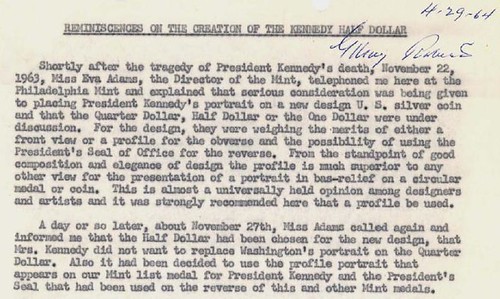
From the web site:
The Historianís Corner is our corner of the United States Mintís web site, a place where you can:
- Examine rarely seen documents of the United States Mint
- Learn about the history of the United States Mint through primary documentation, as it was happening
- Gain access to an information resource that can be used to track the history of coinage in United States and in the future, conduct research on United States Mint programs and operations.
The Historian's Corner Web site currently contains a small amount of legislation, annual report excerpts, press releases, articles, and commemorative coin images from 1892 through 1954.
To access The Historian's Corner, see: http://usmint.gov/historianscorner
To view the Kennedy Half dollar documents, see: http://usmint.gov/historianscorner/index.cfm?action=nugget08-12-07
WILLIAM DU BOIS' HISTORY OF THE PATTERSON FAMILY
It's on Google and it's FREE! I have already downloaded it to a PDF and burned it to a CD to make it a part of my library. You middle date folks gotta check this out. The author is William Ewing Du Bois.
Go to: books.google.com/advanced_book_search
Then type in "robert patterson mint" in the top search line and click "full view only" in the lower portion then click search. It should come up as the second book down.
Or try this for a direct route to the cover: books.google.com/books?id=zo1JAAAAMAAJ&printsec
=frontcover&ie=ISO-8859-1&output=html
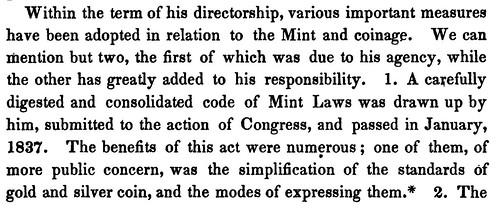
ARTICLE: WAS ROYAL CANADIAN MINT GOLD SMUGGLED OUT IN ACID?
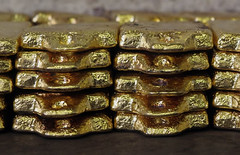 Was $15 million worth of gold stolen from the Royal Canadian Mint by dissolving it in acid, rendering it invisible to metal detectors?
Was $15 million worth of gold stolen from the Royal Canadian Mint by dissolving it in acid, rendering it invisible to metal detectors?Two gold-refining industry sources say gold chloride dissolved in an acid solution can be unrecognizable to metal detectors, such as those guarding the mintís high-security Sussex Drive refinery in Ottawa ó and the method might explain the recently announced disappearance of more than half a metric ton of gold from the mintís inventory.
A similar method was used to hide two Nobel laureatesí gold medals from the Nazis when Germany occupied Denmark in 1940.
The mint dissolves gold in hydrochloric acid as part of the process to refine the precious metal to 99.99 and 99.999 per cent purity, the finest gold in the world.
The process electro-chemically disintegrates the metal into imperceptible particles of gold chloride suspended in the black-coloured acid solution.
"Being a high-security facility, the mint does not discuss its various security procedures and protocols," said Christine Aquino, mint spokeswoman. "But I can confirm that we have methods to detect such a liquid."
To read the complete article, see: Thieves might have smuggled mint gold in acid, say experts (http://www.canada.com/Thieves+might+have+smuggled
+mint+gold+acid+experts/1784193/story.html)
We discussed the fate of the Nobel gold medals earlier in The E-Sylum. To read the article, see: INTERESTING NOBEL PRIZE MEDAL LORE (www.coinbooks.org/esylum_v09n51a30.html)
THE BRASHER BULLETIN SUMMER 2009 ISSUE
 The Summer 2009 issue of the Brasher Bulletin has been published by the Society for Private and Pioneer Numismatics. Articles include
The Summer 2009 issue of the Brasher Bulletin has been published by the Society for Private and Pioneer Numismatics. Articles include - California Gold Rush "Bills of Exchange" by Michael Wehner
- The Sealy, Latouche, Alaska Gold Nugget Token by Charles E. Sealy
- CC Museum Holds Two Early Errors by William Robins
- Pioneer Spotlight: Dame Shirley by Lena Taylor
- The S.S. Brother Jonathanís 1865 Branch Mint Gold Bars by Dan Owens
- In Search of J.J. Conway: The Man Behind The Mint by Dan Owens
Dan Owens forwarded a copy of his The S.S. Brother Jonathanís 1865 Branch Mint Gold Bars article. Here are a few excerpts.
Other modern printed sources stated the bars were found in the remains of a crushed lifeboat trawled up from the ocean depths in the 1930ís off Crescent City.
In recent years a number of numismatists have questioned the authenticity of these bars, claiming that they are counterfeit for several reasons including their irregular hallmark and lack of a tax stamp. In spite of having these anomalies, I set out to prove that these bars were authentic...
I won't divulge Dan's conclusion here, but he's done a great deal of research for this well-annotated article. One of his footnotes mentions an upcoming book on the topic.
LOST GOLD AND SILVER INGOTS RECOVERED AT SEA NEAR PATAGONIA
According to a Tuesday report from the Patagonian Santa Cruz province news agency OPI, divers from the rescue tug "C-Sailor" have been able to bring onboard a basket with gold and silver ingots from the hold of "Polar Mist" which still holds most of the 9.6 tons cargo with an estimated value of 20 million US dollars.
"Once the metal was onboard the "C-Sailor", the ingots were verified, strapped and sealed before observers from the Argentine Coast Guard and representatives from the insurance company", according to the OPI report.
It is estimated divers will need from ten to twenty days to recover the full treasure, much depending on the weather conditions in the Southern Atlantic winter.
To read the complete article, see: Divers have recovered part of the gold lost in the South Atlantic (http://en.mercopress.com/2009/07/15/divers-have-
recovered-part-of-the-gold-lost-in-the-south-atlantic)
WAYNE'S NUMISMATIC DIARY JULY 14, 2009
Tuesday night was the monthly meeting of my Northern Virginia numismatic social group, Nummis Nova. We met at the San Vito Italian restaurant in Fairfax, near George Mason University. We had our best turnout ever, an encouraging sign for the future of the group.Attending were Bill Eckberg, Chris Neuzil, Dave Schenkman, Howard Daniel, Joe Levine, Jon Radel, Julian Leidman, Mike Packard, Roger Burdette, Tom Kays, Traci Poole, Wayne Herndon and me.
I was the last straggler and squeezed onto the end of the table between Howard and Julian. I thanked Howard for the heads' up about the cgb.fr web site. He recalled visiting the shop on one of his trips to Paris. He said he doesn't often find titles in his Southeast Asian specialty area, but when he does, "It's a goodie".
Tom Kays was sitting next to Julian. I apologized for forgetting to bring my copy of Dye's Coin Encyclopedia. I had brought it along to show him the previous month, but he was unable to make it. His E-Sylum query about the book elicited some great responses.
I always look forward to Tom's attendance - he can always be counted on to bring some great coins for show and tell. It being Bastille Day, our host Mike Packard had suggested bringing "French items or items tied to the French Revolution". Tom was well prepared, bringing a number of French and French colonies pieces.
Tom writes:
In choosing French coins I picked items mostly dating from Louis XIV through Louis XVI. Genuine and contemporary counterfeit coins, jettons, French colonial coins and a few newer items including an 1815 gold coin of Napoleonís hundred days and an 1824 Lafayette medal filled out the case.
From Demi-Mousquetaires to counterfeit Sou Marques to the Isle du Vent 15 and 30 sols either people knew what they were right off, could not see them (as the lighting is usually set to "ambiance" in the various restaurants at which we dine), or they were afraid to ask. Book-wise I brought Coinage of France from the Dark Ages to Napoleon by Nicholas Mayhew.
I agree that the lighting at our meetings always leaves something to be desired. I should bring an extension cord and lamp in addition to the magnifier I usually manage to forget and leave in my car. I did have a hard time seeing much detail on Tom's coins, although I could tell that many were in great condition.
Tom adds:
Hugues used words from the Emancipation Proclamation and Lincolnís second inaugural address, but in abbreviating "Proclamíd" he left out an "I." Other versions of the medal corrected the spelling. Also in the case was an 1864 McClellan token, William Barberís 1881 Lincoln / Garfield U.S. Mint medal in silver, a mechanical McKinley / Hobart jugate Goldbug and a pinback with McKinleyís picture in memoriam.
I'm not sure who brought them, but a couple nice copies of the Libertas Americana medal were passed around the table, too.
Howard brought his copy of Monnaies Coloniales Francaises 1670-1988 by Victor Gadoury & Georges Cousinie. Here's some additional information Howard forwarded to me after the meeting: 2nd Edition, 552 pages, 1988. Published by Victor Gadoury Numismate (now Victor Gadoury Editions) 38 boulevard des Moulins, Monaco MC-98000.
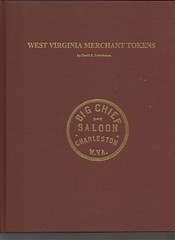 Several other books were passed around. I had brought a copy of Andrew Wager's The Mystery of Henry Morgan: A Numismatic Detective Story, which I'd received just the day before. I also had my copy of The Rebirth of Antiquity: Numismatics, Archaeology and Classical Studies in the Culture of the Renaissance, edited by Alan Stahl. Man, I've got a lot of book reviews to do.
Several other books were passed around. I had brought a copy of Andrew Wager's The Mystery of Henry Morgan: A Numismatic Detective Story, which I'd received just the day before. I also had my copy of The Rebirth of Antiquity: Numismatics, Archaeology and Classical Studies in the Culture of the Renaissance, edited by Alan Stahl. Man, I've got a lot of book reviews to do.As if that weren't enough. David brought me a nicely inscribed copy of his brand new book West Virginia Merchant Tokens. I'll write a review in an upcoming E-Sylum. He had a copy for Joe Levine, too, and the inscription had everyone, most of all Joe, in stitches. Written on the title page, it said
Conversation was lively throughout our table. Before our dinners arrived I walked over to the far end, where I spoke with Mike Packard, Traci Poole and Roger Burdette. Roger had been talking about his upcoming Coin World article based on his latest research. Other topics included the longevity of the Stack's coin firm. Roger quipped, "I wonder what 'Moses Stack' had on that auction scroll catalog he took to Babylon?"
I spoke with Traci about Saturday's coin show in Annandale, VA. Me, Jon Radel and Mike Hudson were there running the kids' program at 11am. We had a nice turnout of about thirty people. I gave a presentation on the Lincoln Cent. Jon donated a roll of the new Lincoln cent designs and we gave one to each kid. Mike and Jon helped to sign people in, and Jon's son Joe was our runner, handing out coins and extra auction cash to kids who answered quiz questions.
QUICK QUIZ: I explained to the kids how Abraham Lincoln is pictured on BOTH sides of the Lincoln Memorial cents and the five dollar bill (because his statue is shown inside the Lincoln Memorial). The kids caught on quickly and fired back quiz questions of their own, catching me a little off guard. So who can name coins which picture George Washington on both sides?
The kids' coin auction went very well - we had twenty lots, including two nice Morgan and Peace dollars. It was the first time we did this here, but the kids caught on pretty quickly. I kept the pace fast, and everyone seemed to have fun and come away with an item of interest. We're looking forward to doing it again in December.
When our meals came I scooted back to my seat. Joe regaled us with some great tales of fellow dealers and his experiences over the years. After ordering dessert I wandered over to the other side of the table to mingle again. This time I spoke with Wayne Herndon, who's doing very well with his Wizard Coin Supply business. We're working on some ads for upcoming E-Sylum issues.
Usually our meetings come to an end all too soon. This one was particularly enjoyable, but it dragged on too long thanks to a crashing computer. Our poor waitress had to figure out who had what to reconstruct our individual checks by hand. It was 10pm before most of us got out of there. But the meal was great as was the company and conversation.
ANCIENT COINS AND DEEP PROTON ACTIVATION ANALYSIS
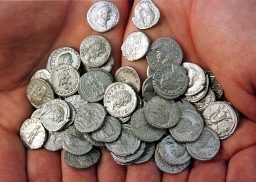 The world's largest haul of ancient coins has been restored and will be put on view to the public shortly.
The world's largest haul of ancient coins has been restored and will be put on view to the public shortly.The 108,000 Roman coins were found by chance in Libya in 1981 but were in such poor condition that it has been impossible to adequately restore them until recently.
Now Italy's Institute for Technologies Applied to Cultural Heritage (ITABC) has acquired the means to do it, using instruments such as the DPAA (Deep Proton Activation Analysis), a non-invasive analysing tool.
Datable to 294-33 AD, the coins have a rare mix of copper, tin and lead alloys with a touch of silver and a silver coating.
''It's the biggest haul of coins not only in the Roman world but probably throughout all antiquity,'' said ITABC's Salvatore Garraffo.
To read the complete article, see: Haul of Roman coins restored (www.ansa.it/site/notizie/awnplus/english/news/2009-07-14_114383620.html)
NEW ALTERNATIVE CURRENCY: THE STROUD POUND
The project by Transition Stroud, which aims to help tackle the recession and cut carbon emissions, will allow shoppers to use special banknotes to buy goods and services from participating businesses.
Individuals, businesses and charities wanting to use the Stroud Pound will have to join a co-operative.
Members will be able to buy the new currency at one of several branches at a rate of one pound per unit in denominations of £1, £5, £10 and £20 at a later date.
The banknotes, which are currently at the prototype stage, will feature icons of the Stroud valleys, such as lawnmower inventor Edwin Beard Budding and the Gloucestershire old spot pig.
Organisers are continuing a drive to get 30 businesses, 100 individuals and several charities on board before unveiling the banknotes at the official currency launch on Saturday, September 12.
To read the complete article, see: Laurie Lee to appear on banknote for Stroud's own currency (http://www.stroudnewsandjournal.co.uk/news/
4491723.Laurie_Lee_to_appear_on_banknote_for_Stroud_s_own_currency/)
SILVER DOLLAR SMITH'S SALOON
John N. Lupia III writes:Silver Dollar Smith, a politician and saloon owner with his bar on Essex Street, New York, had one hundred silver dollars embedded in cement as a floor pavement design. After his death his son took over the saloon and customers began stealing the silver dollars out of the floor. More than twenty-two were missing before the son had the remaining dollars removed.
See The Numismatist, Vol. XV, No. 4, April (1902) : 113-114
"Smith" is a common name and I had trouble locating much about him on the net, but I did find this article published March 6, 1889 in The New York Times. His saloon must have been an interesting place to visit. -Editor
To read the New York Times article, see: An Election Fraud Case: One of Silver Dollar Smith's Henchmen in the Toils (http://query.nytimes.com/mem/archive-
free/pdf?_r=1&res=9D03EED81E38E533A25755C0A9659C94689FD7CF)
FEATURED WEB PAGE: CALCUTTA MINT
This week's Featured Web page is about the old Calcutta Mint building.
The mint was of great importance since it was the only one that was producing silver coins, which were in circulation at that time. As many as 3,00,000 to 6,00,000 silver coins were manufactured here daily. Gold, copper and bronze coins were also made here, and the facility for manufacturing medals was also available.
The old yellowish Grecian structure that was once the old mint complex of Kolkata, was built on an area of 12.5 acres. Its foundation stone was laid in March, 1824, and it became operational from August 1, 1829. Silver coins were minted here till 1952.
Although a decision was taken to develop the mint, which is a heritage site, into a museum along with the development of the area for tourism under a public-private partnership (PPP) with a set deadline of September, 2011, much progress is yet to be seen.
www.dezixx.com/2009/06/then-and-now-calcutta-mint.html
